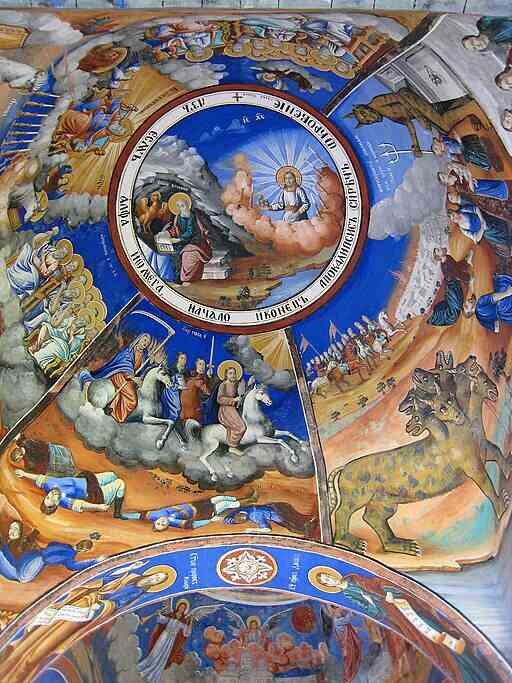Unveiling the Apocalypse: Understanding its Origins, Characteristics, and Impact
Embarking on a journey through ‘Apocalypse Unveiled: Understanding Biblical Visions and Eschatological Themes,’ we venture into the enigmatic realms of the Bible’s apocalyptic texts, decoding the intricate visions and prophetic insights that navigate the intricate landscapes of divine revelation.
Subtitles:
- Defining the Apocalypse
- The Essence of Apocalyptic Genre
- Exploring Eschatology and its Role
- Historical Context and Significance
- Key Characteristics of Apocalyptic Revelations
The term “apocalypse” originates from the Greek word ‘apokálupsis,’ denoting ‘revelation’ or ‘disclosure.’ This literary genre encompasses revelations of cosmic mysteries or future events delivered by supernatural beings to human intermediaries. These revelations are often conveyed through dreams, visions, and symbolic imagery derived from Hebrew scriptures and cosmic allegories.
Understanding the Apocalypse
The apocalypse, while often associated with catastrophe in popular usage, actually denotes a revelatory narrative. It encompasses eschatological expectations about the end of the current age, emphasizing divine judgment and salvation for believers.
Characteristics and Origins
Apocalyptic texts, written pseudonymously, extend from the mid-2nd century BC to the 2nd century AD, found in diverse cultures including Persian, Greco-Roman, Jewish, and Christian writings. This genre’s roots trace back to ancient mythologies, Jewish prophetic traditions, and Zoroastrian dualism, shaping its symbology and dualistic worldview.
In-depth Examination
Revelations within apocalyptic literature are conveyed through dreams, visions, and heavenly journeys, linking celestial and earthly realms. Symbolism drawn from ancient texts, transcendental themes, cosmological surveys, dualism, and esoteric numerology constitute its defining features.
Authors and Pseudonyms
Notably, most apocalyptic works were attributed to revered figures from past centuries, like the Book of Daniel ascribed to the legendary Daniel. Pseudonymity was often employed to validate new works, shield authors from repercussions, or substantiate divine revelations.
Apocalypse Unveiled: Understanding Biblical Visions and Eschatological Themes
Within the intricate tapestry of religious literature, ‘Apocalypse Unveiled: Understanding Biblical Visions and Eschatological Themes’ serves as a profound exploration into divine revelations, unveiling the cryptic messages and prophetic narratives entrenched within the Bible’s apocalyptic passages.
Defining the Apocalypse (Daniel 7-12)
The Book of Daniel, particularly chapters 7-12, is a cornerstone for understanding the apocalyptic genre in the Bible. It presents prophetic visions granted to Daniel, unveiling future events with symbolic imagery. These chapters reveal the rise and fall of kingdoms, the emergence of apocalyptic beasts, and the promise of God’s ultimate sovereignty over history.
The Essence of Apocalyptic Genre (Revelation)
The Book of Revelation, penned by John, constitutes the primary apocalyptic text in the New Testament. Its vivid imagery, symbolic language, and prophetic visions portray divine messages about the future. Revelation unfolds eschatological themes, depicting cosmic battles, heavenly visions, and the ultimate triumph of good over evil.
Book of Revelation | Navigating Divine Prophecies and Visions
Exploring Eschatology and its Role (Matthew, Mark, Luke, John)
Within the Gospels, Matthew, Mark, Luke, and John present Jesus’ teachings on eschatology—discussions about the end times and the Kingdom of God. Each Gospel offers unique insights into Jesus’ prophecies, emphasizing readiness for His second coming and the establishment of God’s reign.
Historical Context and Significance (2 Baruch, 4 Ezra)
Extra-canonical texts like 2 Baruch and 4 Ezra contribute significantly to understanding apocalyptic literature. These texts, written during times of crisis, reflect Jewish perspectives on divine judgment, suffering, and hope amidst adversity. They echo themes of destruction, renewal, and the ultimate triumph of righteousness.
Key Characteristics of Apocalyptic Revelations (Revelation 13:1, Daniel 7, Matthew 13:55, Mark 6:3)
Several key biblical passages exemplify the characteristics of apocalyptic literature. Revelation 13:1 unveils symbolic imagery of apocalyptic beasts, while Daniel 7 depicts similar imagery with prophetic significance. In the Gospels, references like Matthew 13:55 and Mark 6:3 hint at the apocalyptic elements present in Jesus’ teachings.
This genre, rich in symbolism and prophecy, holds significant historical and spiritual relevance, impacting cultural narratives and religious thought across diverse civilizations.
The Bible’s apocalyptic texts, with their symbolic visions and eschatological themes, provide profound insights into divine revelations about the future and God’s ultimate plan for humanity. These texts remain pivotal in shaping beliefs about the end times and offering hope amidst uncertainty.
Sources: Christianity, PinterPandai, World History Encyclopedia
Photo credit: Edal Anton Lefterov, Public domain, via Wikimedia Commons
Photo description: Apocalypse depicted in Christian Orthodox traditional fresco scenes in Osogovo Monastery, North Macedonia.



